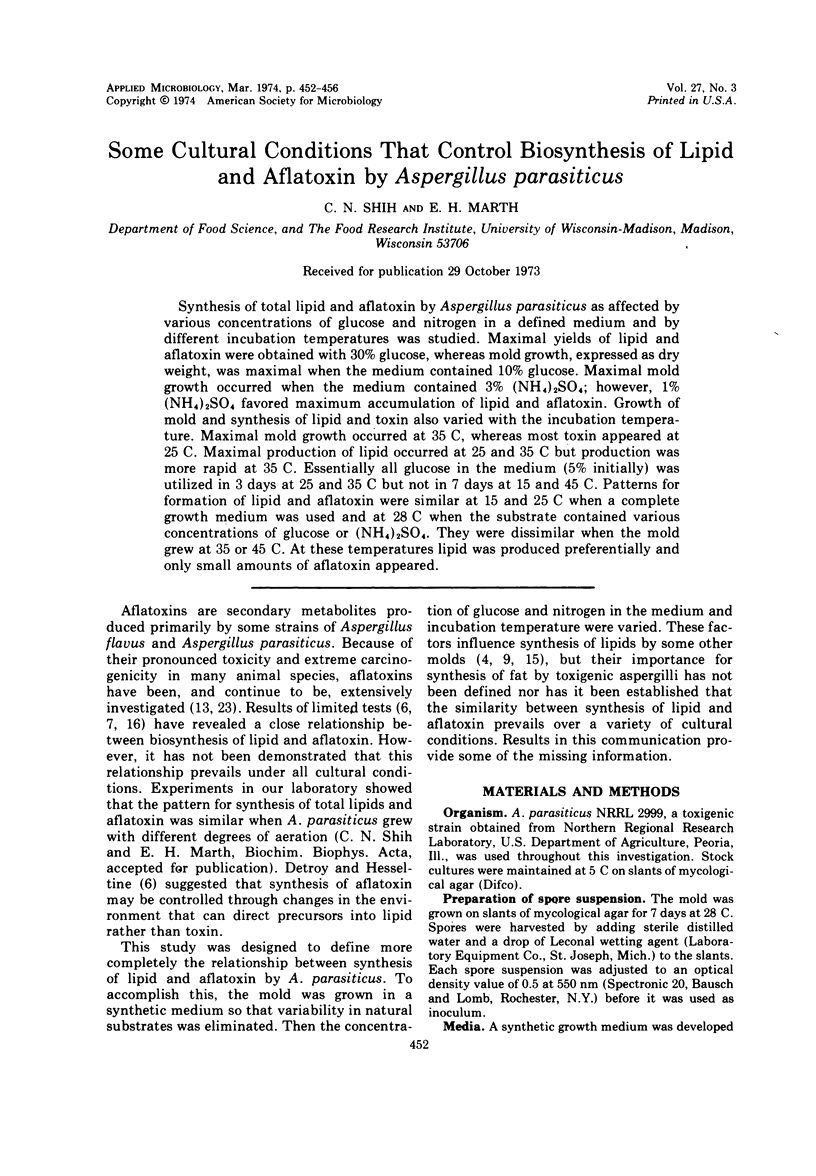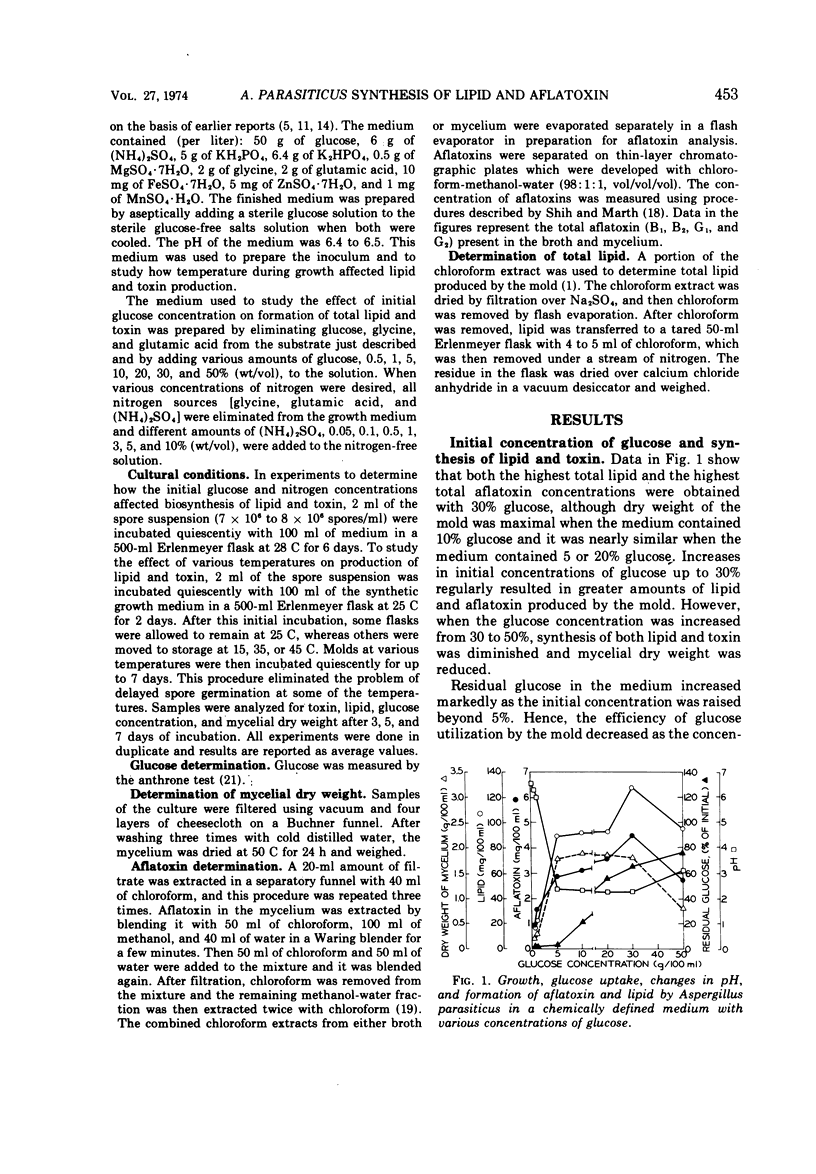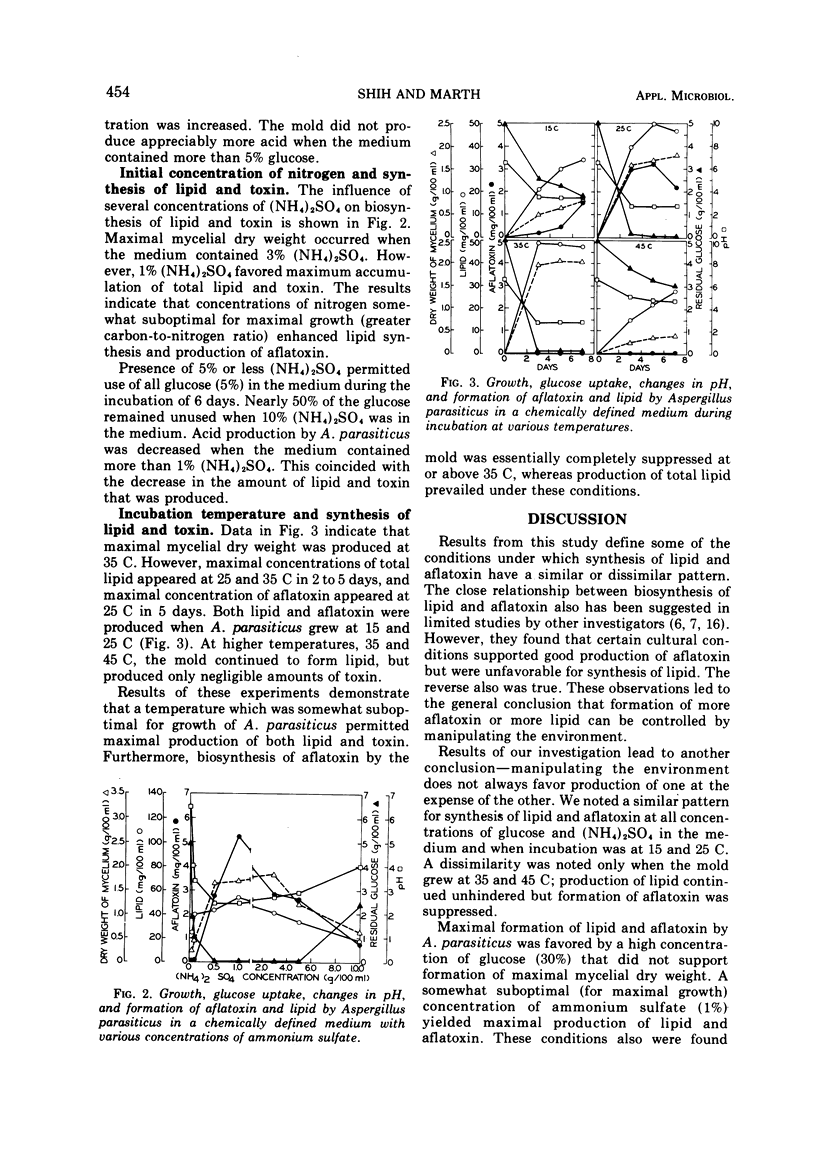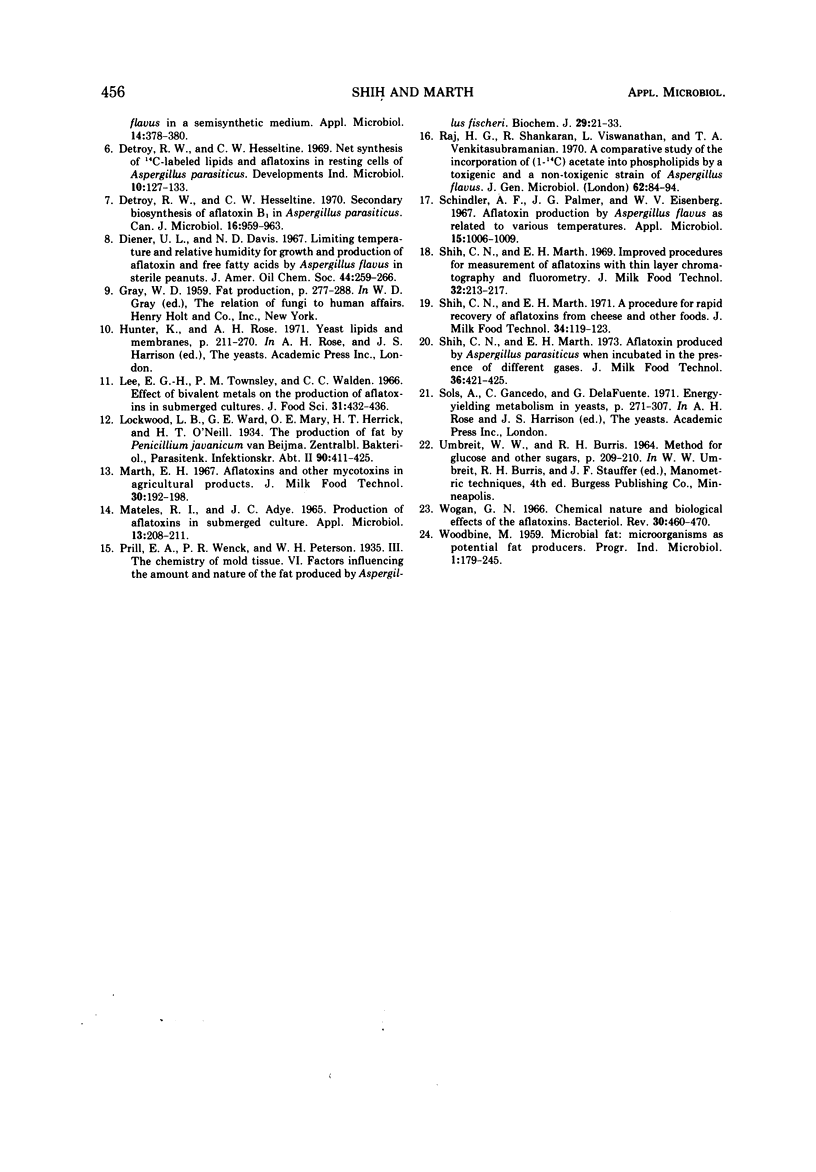Abstract
Synthesis of total lipid and aflatoxin by Aspergillus parasiticus as affected by various concentrations of glucose and nitrogen in a defined medium and by different incubation temperatures was studied. Maximal yields of lipid and aflatoxin were obtained with 30% glucose, whereas mold growth, expressed as dry weight, was maximal when the medium contained 10% glucose. Maximal mold growth occurred when the medium contained 3% (NH4)2SO4; however, 1% (NH4)2SO4 favored maximum accumulation of lipid and aflatoxin. Growth of mold and synthesis of lipid and toxin also varied with the incubation temperature. Maximal mold growth occurred at 35 C, whereas most toxin appeared at 25 C. Maximal production of lipid occurred at 25 and 35 C but production was more rapid at 35 C. Essentially all glucose in the medium (5% initially) was utilized in 3 days at 25 and 35 C but not in 7 days at 15 and 45 C. Patterns for formation of lipid and aflatoxin were similar at 15 and 25 C when a complete growth medium was used and at 28 C when the substrate contained various concentrations of glucose or (NH4)2SO4. They were dissimilar when the mold grew at 35 or 45 C. At these temperatures lipid was produced preferentially and only small amounts of aflatoxin appeared.
Full text
PDF




Selected References
These references are in PubMed. This may not be the complete list of references from this article.
- BLIGH E. G., DYER W. J. A rapid method of total lipid extraction and purification. Can J Biochem Physiol. 1959 Aug;37(8):911–917. doi: 10.1139/o59-099. [DOI] [PubMed] [Google Scholar]
- Ciegler A., Peterson R. E., Lagoda A. A., Hall H. H. Aflatoxin production and degradation by Aspergillus flavus in 20-liter fermentors. Appl Microbiol. 1966 Sep;14(5):826–833. doi: 10.1128/am.14.5.826-833.1966. [DOI] [PMC free article] [PubMed] [Google Scholar]
- Detroy R. W., Hesseltine C. W. Secondary biosynthesis of aflatoxin B in Aspergillus parasiticus. Can J Microbiol. 1970 Oct;16(10):959–963. doi: 10.1139/m70-164. [DOI] [PubMed] [Google Scholar]
- Diener U. L., Davis N. D. Limiting temperature and relative humidity for growth and production of aflatoxin and free fatty acids by Aspergillus flavus in sterile peanuts. J Am Oil Chem Soc. 1967 Apr;44(4):259–263. doi: 10.1007/BF02639271. [DOI] [PubMed] [Google Scholar]
- MATELES R. I., ADYE J. C. PRODUCTION OF AFLATOXINS IN SUBMERGED CULTURE. Appl Microbiol. 1965 Mar;13:208–211. doi: 10.1128/am.13.2.208-211.1965. [DOI] [PMC free article] [PubMed] [Google Scholar]
- Prill E. A., Wenck P. R., Peterson W. H. The chemistry of mould tissue: Factors influencing the amount and nature of the fat produced by Aspergillus fischeri. Biochem J. 1935;29(1):21–33. doi: 10.1042/bj0290021. [DOI] [PMC free article] [PubMed] [Google Scholar]
- Raj H. G., Shankaran R., Viswanathan L., Venkitasubramanian T. A. A comparative study of the incorporation of [1-14C] acetate into phospholipids by a toxigenic and a non-toxigenic strain of Aspergillus flavus. J Gen Microbiol. 1970 Jul;62(1):89–94. doi: 10.1099/00221287-62-1-89. [DOI] [PubMed] [Google Scholar]
- Schindler A. F., Palmer J. G., Eisenberg W. V. Aflatoxin Production by Aspergillus flavus as Related to Various Temperatures. Appl Microbiol. 1967 Sep;15(5):1006–1009. doi: 10.1128/am.15.5.1006-1009.1967. [DOI] [PMC free article] [PubMed] [Google Scholar]
- Wogan G. N. Chemical nature and biological effects of the aflatoxins. Bacteriol Rev. 1966 Jun;30(2):460–470. doi: 10.1128/br.30.2.460-470.1966. [DOI] [PMC free article] [PubMed] [Google Scholar]


